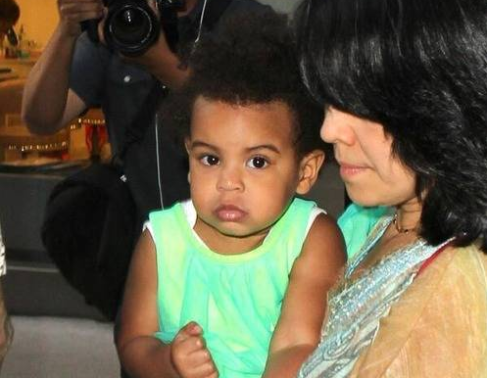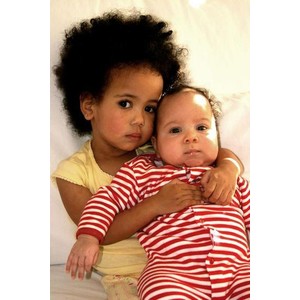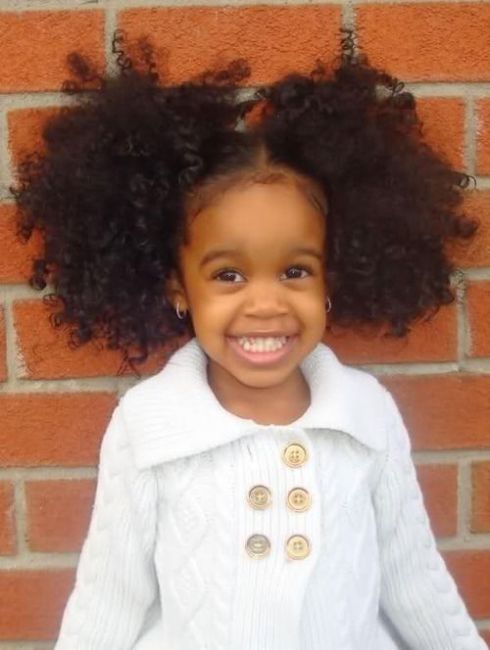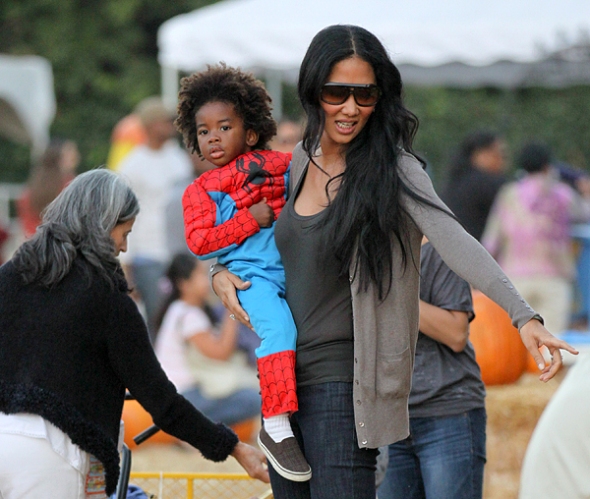Wash day can be just that, a whole day. However, we shouldn’t have to draw a line through the day just to wash our hair. I am now able to wash my hair and go out to dinner within the hour. Washing your hair should not have to result in a night in front of the TV, waiting for our hair to dry in twists. Some of us avoid swimming because of the time spent washing and detangling our hair afterwards. Here are some styles that are appropriate to do after washing. They allow you to wash, style and go. Plus, they have the added bonus of stretching the hair, making it easy to re-style the next day.
Roll, tuck and pin
Kimmytube first introduced me to this style. It is simply rolling the hair around the head and pinning. This is a great style for medium length hair, which, may not be long enough to put into a bun. It also helps to stretch the hair, as it is pulled taut to roll and shape. Use hair pins or bobby pins to secure the style. Cover hair with a satin scarf and leave for five minutes to smooth your edges down.
Low pigtails/buns
Pigtails are easier than putting the hair into a bun, as you only need to style one half of the head at a time. This works well for thick hair, which, can be difficult to put into a ponytail, especially when wet and shrunken. I don’t worry about doing the perfect part down the middle. I simply use my fingers. If you want to do a neat part use a rat-tail comb. All you will need are two snag proof hair bands.
This style can be modified in three ways:
1. If your hair is short to medium length , you can leave it in pigtails. The front will be pulled taut and be stretched from the roots.
2. If your hair is medium to long, you can put each pigtail into a bun. Twist each one and roll into a bun. Pin to secure or use another hair band to hold the buns in place.
3. You can braid each pigtail, creating two jumbo braids. This will stretch out the hair the most. If you are worried about looking like a school girl, pin both braids up and across from each other, to create a more mature style. This is demonstrated in the video below.
Check out whoissugar’s after washing styles and, styling ideas for the following day.
Top knot
Put the hair in a high ponytail and pin into a bun. The ponytail can be twisted or braided. This will make it easier to shape, and protect the hair as it is manipulated. Or, shape the bun loosely, in whichever way you desire. Be gentle when styling wet hair, as it is more fragile. This is an easy style to do. It still looks good even when it is a little messy. So you don’t necessarily have to worry about obtaining the sleek look and smoothing down your edges.
A low bun
This is great for medium to long hair and, looks elegant for going out later. To ensure that the hair looks as sleek as possible, use the palm of your hands to smooth your edges. If you use a product for smoothing add accordingly. I use my homemade flaxseed (linseed) gel to hold my edges down, if necessary. The most important step is covering your head firmly with a satin scarf. Leave it on as you finish getting ready (10 minutes or so). When you take if off the hair should looker sleeker. You can also use a donut to fill out the bun, which, could also be made using an old sock.
Two french braids
Split the hair in two and put each side into a French braid. Again splitting the hair will make it easier to manipulate. Sleek down the edges with some product or water and cover with a satin scarf. The next day the hair should be stretched and wavy. I have worn my hair out in this stretched out style before.
A Jumbo Braid
My favorite after washing style is the jumbo braid. Just put your hair into a low ponytail. Divide the ponytail into three and braid down. I find this stretches my hair the most and leaves it wavy when taken down. This is the quickest and most convenient after washing style to do. Add some flaxseed gel to smooth your edges and use your satin scarf.
After swimming
If you have gone swimming in a pool that has chlorine, it is best to use a clarifying shampoo (if not that day then later during the week). Immediately follow this with a conditioner to relieve that squeaky clean feeling. Co-washing is even quicker, as there are fewer steps. Take a medium-sized section of hair, detangle and remove shed hair with the conditioner in. Add your leave in and/or oil for sealing, to that section of hair. Twist it to prevent it from getting tangled again. By the end, you should have four to six large twists. Cover the hair with a t-shirt to remove the excess water. Then you can style the hair using any of the above methods, if you have somewhere to go afterwards. If your hair needs to be deep conditioned or requires extra care and attention, this can be done at home later.
Two important tools
A satin scarf and t-shirt are crucial. Loosely wrap your head with the t-shirt to remove the excess water. It only has to be on for a few minutes. This will ensure that your hair is not soaking wet when styling, making it easier and safer to manipulate. Do not leave your hair to dry completely before styling. Use the satin scarf to smooth down your edges. Smooth your edges with the palms of your hand. Place the scarf on firmly and continue to get ready for the day. After about 10 minutes your edges should be a lot smoother and, the style will appear less frizzy overall. The longer you leave the scarf on the better.
After washing and styling, your hair will still be a little damp but look presentable. This will enable you to continue on with your day. Obviously, if you want to do a braid out or twist out, you should put your hair in braids or twists after washing. Some women like to wear their hair in large twists or braids as a style. This is another option. For those who are not a fan of this look, it usually means staying in for the day or covering your hair with a scarf or hat. The above styles allow you to style your hair quickly after washing and, still look presentable. Then you can do a braid or twist out on stretched hair another day. I no longer dedicate a whole day to washing my hair, unless I want to.
How do you style your hair after washing? Share your ideas below.






































